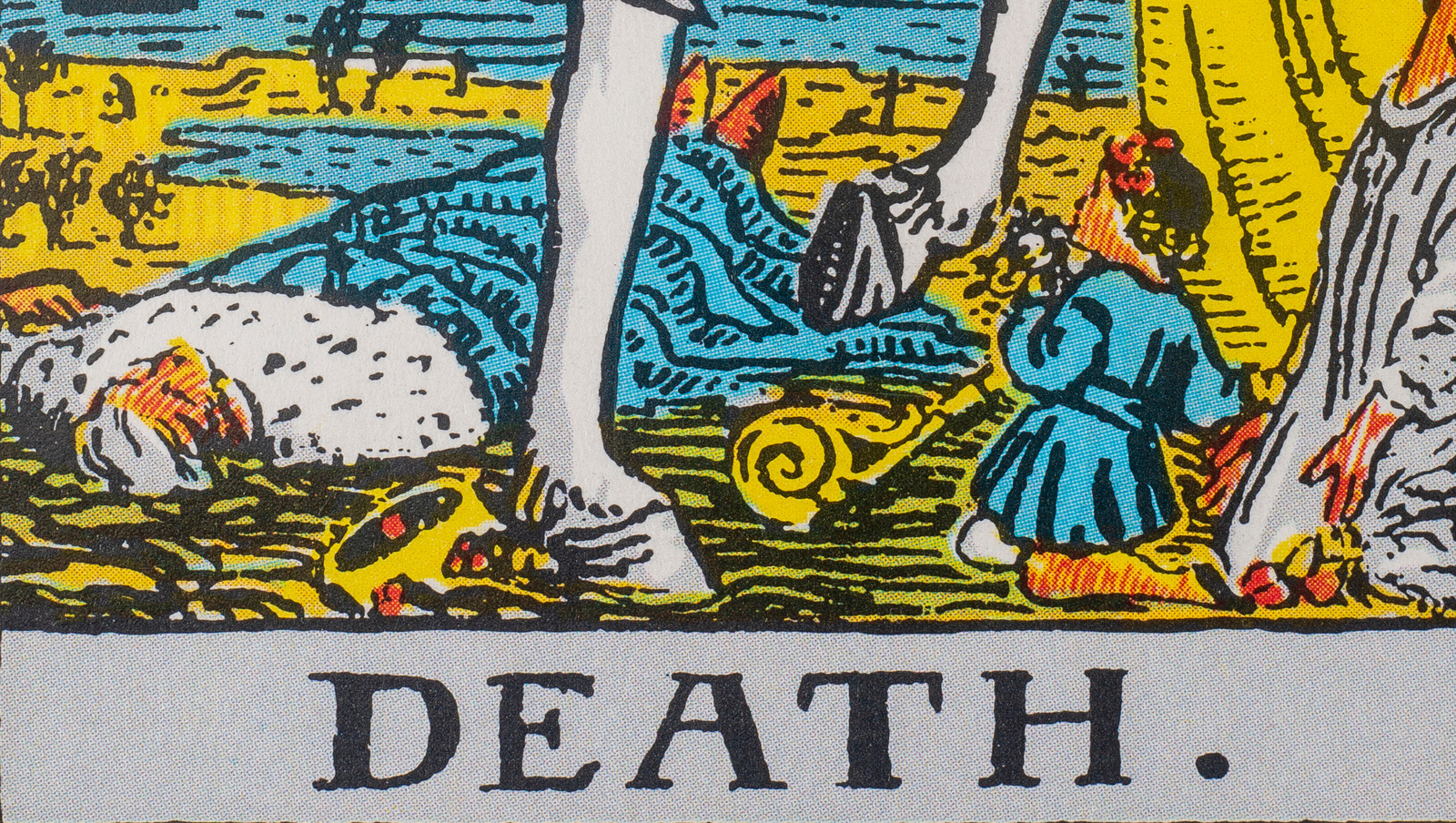The Death card in Tarot, an image often shrouded in drama and trepidation, signifies far more than mere demise. It serves as an intricate metaphor for transcendence and metamorphosis, embodying both an ending and a new beginning. Just as the winter months yield to the blossoming of spring, the Death card heralds profound transformation and renewal in the querent’s life.
Upon encountering the Death card in a reading, one might feel a surge of anxiety, a visceral reaction that echoes our instinctive aversion to change. This visceral response, however, belies the richness and depth of meaning that this card holds. The imagery of the card is striking; it typically features a skeletal figure, often cloaked in a dark shroud, ridden atop a white horse. This juxtaposition of life and death illustrates the cycle of existence—the perpetual dance between creation and destruction.
To unravel the significance of this card, it is vital to explore its archetypal themes. Central to the Death card is the notion of transformation. In alchemical terms, it represents the nigredo stage—the dissolution of previous forms in order to facilitate rebirth. Much like the phoenix that rises from its ashes, the Death card typifies the eternal promise of resurgence inherent in our life experiences.
Endings represented by the Death card often serve as catalysts for introspection. When it appears in a reading, it may indicate that a chapter in your life is drawing to a close: a relationship, a job, or perhaps an outdated belief system. The time for stagnation has passed; it is now a moment to shed the old, allowing new opportunities to flourish. This call to action is not merely a harbinger of doom but a chance to embrace the transformative power of change.
Moreover, the Death card compels you to assess what you truly value. In the quiet contemplation following an ending, one has the opportunity to discern what deserves to be carried into the new phase of life. This act of discernment can result in a profound sense of liberation, enabling you to prioritize the people, passions, and pursuits that align with your authentic self.
In addition to personal transformation, the Death card serves as an allegory for the cycles of life within the grand tapestry of the universe. Just as the seasons shift, bringing forth birth in spring and decay in autumn, this card exemplifies nature’s infinite ability to resurrect. It invites individuals to harmonize with these rhythms, accepting that life is a series of ebbs and flows rather than a linear progression.
This acceptance is sometimes accompanied by a sense of grief. Loss, whether tangible or intangible, can be a complex labyrinth of emotions. The Death card does not dismiss these feelings; rather, it acknowledges them as an integral part of the process. By giving space to these emotions, one can eventually navigate toward acceptance and rejuvenation. Grief can metamorphose into gratitude, allowing you to honor what was while turning your gaze toward new horizons.
The Death card’s unique appeal also lies in its capacity to reveal deeper truths. When an ending is imminent, it invites you to confront your fears and face the uncertainties of the future. Are you clinging to what no longer serves you? The depths of this inquiry can be both terrifying and enlightening. Much like a deep-sea exploratory dive, you may unearth treasures hiding beneath the surface—resilience, strength, and creativity nestled within the chaos of disarray.
In the context of relationships, the Death card can manifest in various ways. It may indicate the end of a toxic association, sparking the emotional fortitude required to disconnect from what is harmful. Conversely, it can signify a pivotal transition within a relationship, pushing both parties to evolve, allowing them to emerge stronger and more attuned to one another’s needs.
Professionally, the presence of the Death card can signify a pivotal transformation within one’s career. It acts as a mirror, reflecting the urgency to recalibrate your ambitions or even to relinquish a job that stifles growth. It may compel individuals to pursue paths aligned with their passions and aspirations, thereby redefining their work-life balance and enhancing overall fulfillment.
Moreover, in the spiritual realm, the Death card beckons a journey toward enlightenment. It urges an individual to shed the layers of the ego that inhibit spiritual awakening, allowing for deeper connections with the self and the universe at large. Through this spiritual stripping, one may encounter the vibrant tapestry of life in its entirety—an intricate web woven from the threads of experience, loss, and rebirth.
Ultimately, the Death card serves as a pivotal reminder that life is an intricate cycle of closures and comebacks. By embracing this card’s counsel, one can navigate the labyrinth of existence with grace, understanding the profound capabilities that reside within us to transform and transcend. As a constant testament to the creative power of endings, the Death card urges us to anticipate, adapt, and rise anew, thriving in the ever-unfolding journey of life.









Leave a Comment